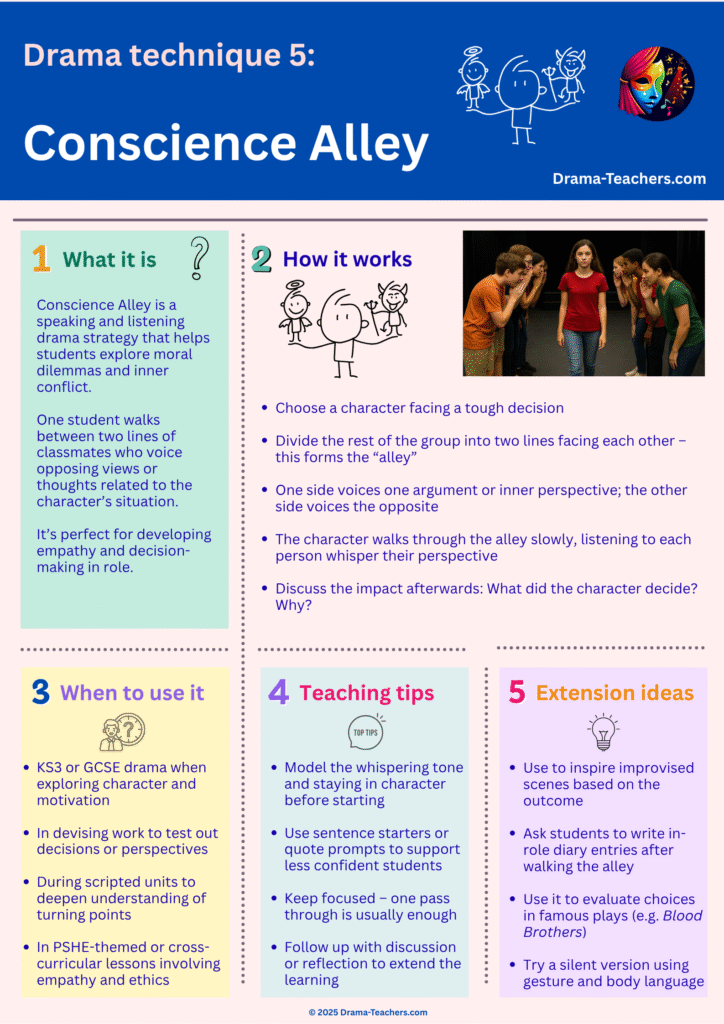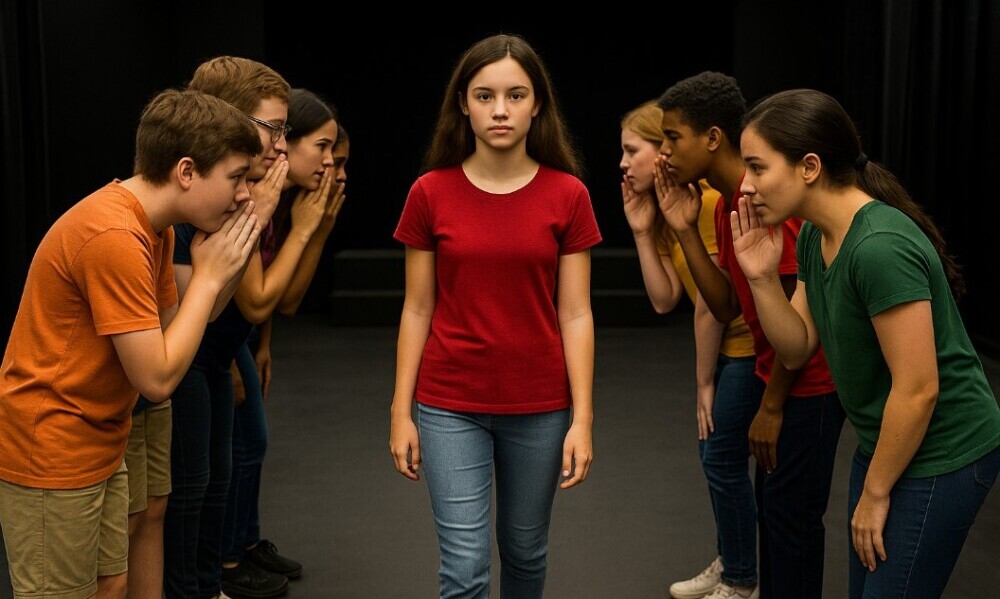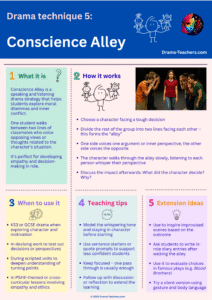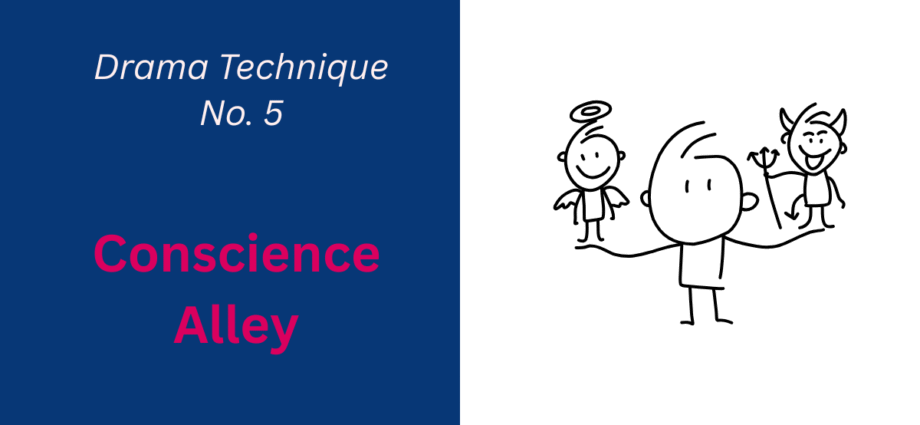Conscience Alley is a simple but highly effective drama strategy that helps students dive deeper into a character’s inner conflict or a moral dilemma. It encourages empathy, decision-making in role, and active listening – all essential skills for budding performers.
Whether you’re teaching devising work, exploring character motivations in a script, or running a PSHE-linked session, Conscience Alley can help students think critically and creatively.

What is Conscience Alley?
Conscience Alley is a speaking and listening technique used in drama lessons to explore different sides of a character’s dilemma.
One student steps into role as a character who is facing a difficult decision. The rest of the group form two parallel lines – like an “alley” – and offer different perspectives by voicing arguments, opinions or inner thoughts related to the decision. The student in role walks slowly between them, listening as the “voices” of the alley whisper suggestions or guidance.
This technique is perfect for encouraging empathy, moral reflection and spontaneous response in role.

How it works
To use Conscience Alley in your lesson:
- Choose a character who is grappling with a tough decision or inner conflict
- Divide the rest of the class into two lines facing each other. This forms the alley
- Assign viewpoints – one side of the alley will represent one perspective, inner voice, or argument. The other side offers the opposite
- The character walks through the alley slowly, listening to each student whisper their point of view (you can have the students overlap their words slightly for an eerie effect
- Debrief at the end – what decision did the character make and why? What influenced their choice?
It’s important to keep the mood focused, and the whispers in character. You may want to model the tone and style first.
When to use it
Conscience Alley works especially well in:
- KS3 and GCSE Drama when developing character motivation and empathy
- Devising work – to test out a character’s possible responses to a situation
- Scripted units – to deepen understanding of turning points in the play
- Cross-curricular sessions, particularly PSHE, when exploring ethical or emotional themes
Teaching tips
- Model the tone and focus – a gentle, in-role whisper works best
- Use sentence starters like “Don’t do it, you know how it will end…” or “If you walk away now, you might regret it forever…” to help students build ideas
- Keep it short – one walk-through is usually enough to have an impact – it can be intense!
- Follow up with reflection, writing or discussion to cement the learning
This activity works best when students already have a good understanding of the character and context, so it often slots nicely into the middle of a scheme of work.
Extension ideas
Want to take it further? Try one of these:
- Turn the outcome into an improvised scene showing what happens next
- Ask students to write in-role diary entries after walking the alley
- Use it to evaluate character decisions in plays like Blood Brothers, An Inspector Calls, or Noughts & Crosses
- Try a silent version using only gesture and body language to communicate the opposing forces
Free download: Conscience Alley technique sheet
Want to keep a copy for your planning or classroom wall?

Download our FREE printable: Drama Techniques 5: Conscience Alley
Includes an overview, how-to steps, teaching tips and extension ideas – all in one colourful A4 resource.
Other techniques you might like:
Drama Techniques 4: Hot-seating
Drama Techniques 6: Physical Theatre


